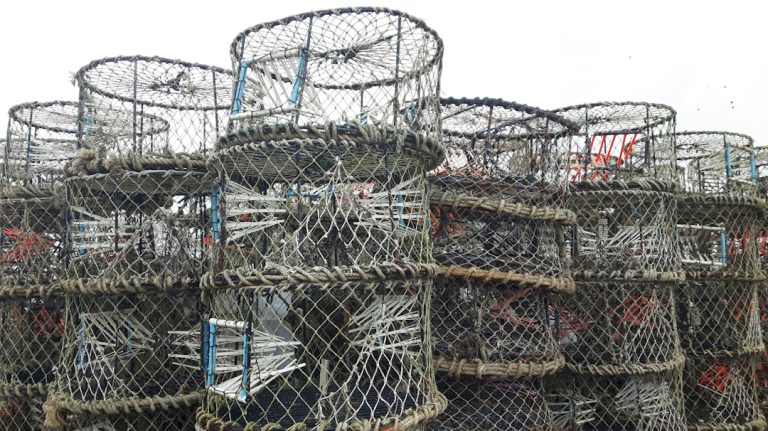Obesity in aquatic life has become a growing concern in recent years, as researchers and environmentalists have observed an increase in the number of overweight fish in various bodies of water around the world. This phenomenon has raised questions about the impact of human activities on the health and well-being of aquatic species, as well as the potential consequences for ecosystems and food chains. The issue of fish obesity is particularly alarming because it not only affects the individual fish, but also has broader implications for the overall health of aquatic environments. As such, it is crucial to understand the causes and consequences of fish obesity, as well as to develop strategies for preventing and managing this problem in order to ensure the long-term sustainability of aquatic life.
The increasing prevalence of obesity in fish is a complex issue that requires a multidisciplinary approach to address. It is not only a matter of concern for environmentalists and conservationists, but also for scientists, policymakers, and the general public. The rise in fish obesity can be attributed to a variety of factors, including changes in water quality, habitat degradation, overfishing, and the introduction of invasive species. Additionally, the impact of climate change on aquatic ecosystems has also been linked to the increase in fish obesity, as rising water temperatures and changes in nutrient availability can affect the metabolism and feeding patterns of fish. As such, it is essential to examine the underlying causes of fish obesity in order to develop effective strategies for prevention and management. By doing so, we can work towards ensuring the health and sustainability of aquatic life for future generations.
Key Takeaways
- Obesity in aquatic life is a rising issue that has significant impacts on fish health and ecosystem balance.
- Causes of fish obesity include overfeeding, high-fat diets, and lack of physical activity, leading to consequences such as reduced reproductive success and increased susceptibility to diseases.
- Environmental factors such as water temperature, pollution, and habitat destruction contribute to fish obesity, highlighting the need for conservation and sustainable management practices.
- Strategies for preventing and managing fish obesity include regulating feeding practices, promoting natural foraging behaviors, and creating enriched environments for physical activity.
- The role of diet and nutrition is crucial in maintaining fish health, with a focus on providing balanced and species-appropriate diets to prevent obesity and related health issues.
Causes and Consequences of Obesity in Fish
The causes of obesity in fish are multifaceted and can be attributed to a combination of environmental, biological, and human-related factors. One of the primary causes of fish obesity is the alteration of natural habitats due to human activities such as pollution, habitat destruction, and overfishing. These changes can disrupt the natural food chain and lead to an imbalance in the availability of food sources for fish, ultimately contributing to overeating and weight gain. Additionally, the introduction of invasive species can also disrupt the natural balance of aquatic ecosystems, leading to increased competition for food and resources among fish species. This can result in overconsumption and subsequent weight gain in certain fish populations.
Furthermore, changes in water quality and nutrient availability can also impact the feeding behavior and metabolism of fish, potentially leading to obesity. For example, excess nutrients from agricultural runoff or wastewater discharge can lead to algal blooms, which can alter the availability and quality of food sources for fish. This can lead to overfeeding and weight gain in fish populations, ultimately contributing to the prevalence of obesity in aquatic life. The consequences of fish obesity are far-reaching and can have significant impacts on aquatic ecosystems. Overweight fish may experience reduced mobility and reproductive success, which can ultimately affect population dynamics and biodiversity within aquatic environments. Additionally, the presence of obese fish can also disrupt food chains and lead to imbalances in predator-prey relationships, potentially impacting the overall health and stability of aquatic ecosystems. As such, it is crucial to address the causes and consequences of fish obesity in order to ensure the long-term sustainability of aquatic life.
Environmental Factors Contributing to Fish Obesity
Several environmental factors contribute to the rising issue of obesity in aquatic life. One significant factor is pollution, which can lead to changes in water quality and nutrient availability that impact the feeding behavior and metabolism of fish. For example, excess nutrients from agricultural runoff or wastewater discharge can lead to algal blooms, which can alter the availability and quality of food sources for fish. This can lead to overfeeding and weight gain in fish populations, ultimately contributing to the prevalence of obesity in aquatic life. Additionally, habitat degradation due to human activities such as pollution and overfishing can disrupt the natural food chain and lead to an imbalance in the availability of food sources for fish, ultimately contributing to overeating and weight gain.
Furthermore, climate change has also been linked to the increase in fish obesity, as rising water temperatures and changes in nutrient availability can affect the metabolism and feeding patterns of fish. Changes in water temperature can impact the metabolic rate of fish, potentially leading to changes in energy expenditure and feeding behavior that contribute to weight gain. Additionally, changes in nutrient availability due to climate change can also impact the availability and quality of food sources for fish, potentially leading to overfeeding and weight gain in certain fish populations. As such, it is essential to address these environmental factors in order to prevent and manage obesity in aquatic life.
Strategies for Preventing and Managing Obesity in Aquatic Life
| Strategy | Description |
|---|---|
| Proper Nutrition | Providing a balanced diet to aquatic life to prevent overeating and obesity. |
| Regular Exercise | Encouraging movement and activity to maintain a healthy weight in aquatic organisms. |
| Monitoring Food Intake | Keeping track of the amount of food given to aquatic life to prevent overfeeding. |
| Environmental Enrichment | Creating a stimulating environment to promote natural behaviors and prevent obesity. |
Preventing and managing obesity in aquatic life requires a comprehensive approach that addresses both the underlying causes of fish obesity and its broader implications for aquatic ecosystems. One key strategy is to improve water quality and habitat conditions through pollution control measures and habitat restoration efforts. By reducing pollution and restoring natural habitats, we can help to restore the natural balance of aquatic ecosystems and ensure the availability of healthy food sources for fish. Additionally, efforts to mitigate the impacts of climate change on aquatic environments can also help to prevent obesity in fish by maintaining stable water temperatures and nutrient availability.
Another important strategy is to promote sustainable fishing practices that prioritize the conservation of fish populations and their natural habitats. By implementing regulations and management measures that limit overfishing and protect critical habitats, we can help to maintain healthy fish populations and reduce the risk of obesity in aquatic life. Additionally, efforts to control invasive species and restore native species populations can also help to restore the natural balance of aquatic ecosystems and reduce competition for food sources among fish species.
Furthermore, public education and outreach efforts are essential for raising awareness about the issue of fish obesity and promoting sustainable behaviors that support the health and well-being of aquatic life. By educating the public about the impacts of human activities on aquatic environments and promoting responsible fishing practices, we can help to foster a culture of conservation that supports the long-term sustainability of aquatic life. Overall, by implementing these strategies, we can work towards preventing and managing obesity in aquatic life and ensuring the health and stability of aquatic ecosystems for future generations.
The Role of Diet and Nutrition in Fish Health
Diet and nutrition play a crucial role in the health and well-being of fish, and are important factors to consider when addressing the issue of obesity in aquatic life. A balanced diet that provides essential nutrients is essential for maintaining healthy metabolic function and energy balance in fish. Proper nutrition supports growth, reproduction, immune function, and overall health in fish populations. However, changes in water quality and nutrient availability due to pollution or climate change can impact the availability and quality of food sources for fish, potentially leading to overfeeding and weight gain.
To address this issue, it is important to promote sustainable fishing practices that prioritize the conservation of fish populations and their natural habitats. By implementing regulations and management measures that limit overfishing and protect critical habitats, we can help to maintain healthy fish populations with access to a diverse range of natural food sources. Additionally, efforts to control invasive species and restore native species populations can also help to restore the natural balance of aquatic ecosystems and ensure access to healthy food sources for fish.
Furthermore, research into the nutritional needs of different fish species can help to inform sustainable aquaculture practices that support healthy growth and development. By understanding the specific dietary requirements of different fish species, we can develop feed formulations that provide essential nutrients while minimizing waste production and environmental impact. Overall, by prioritizing diet and nutrition as key components of fish health, we can work towards preventing obesity in aquatic life and ensuring the long-term sustainability of fish populations.
The Importance of Exercise and Physical Activity for Fish

In addition to diet and nutrition, exercise and physical activity play a crucial role in maintaining healthy metabolic function and energy balance in fish. Regular physical activity supports muscle development, cardiovascular health, metabolic regulation, and overall fitness in fish populations. However, changes in habitat conditions due to pollution or habitat degradation can impact the availability of space for fish to engage in natural behaviors such as swimming and foraging. This can lead to reduced physical activity levels among fish populations, potentially contributing to weight gain and obesity.
To address this issue, it is important to prioritize habitat restoration efforts that provide ample space for fish to engage in natural behaviors such as swimming, foraging, and social interactions. By restoring natural habitats that support a diverse range of physical activities for fish, we can help to promote healthy exercise levels among fish populations. Additionally, efforts to mitigate the impacts of climate change on aquatic environments can also help to maintain stable water temperatures that support healthy metabolic function and physical activity levels among fish populations.
Furthermore, research into the behavioral needs of different fish species can help inform habitat restoration efforts that support natural exercise behaviors. By understanding the specific habitat requirements of different fish species, we can develop restoration plans that provide ample space for swimming, foraging, social interactions, and other natural behaviors that support healthy physical activity levels among fish populations. Overall, by prioritizing exercise and physical activity as key components of fish health, we can work towards preventing obesity in aquatic life and ensuring the long-term sustainability of fish populations.
The Future of Aquatic Life and Overcoming Obesity in Fish
The future of aquatic life depends on our ability to address the issue of obesity in fish through comprehensive strategies that prioritize conservation, sustainability, and environmental stewardship. By addressing the underlying causes of fish obesity such as pollution, habitat degradation, overfishing, invasive species, climate change, diet/nutrition imbalance or lack thereof; we can work towards preventing obesity in aquatic life while ensuring the health and stability of aquatic ecosystems for future generations.
To achieve this goal requires collaboration among scientists, policymakers, conservationists, fishermen/fisherwomen; as well as public education efforts that raise awareness about the impacts of human activities on aquatic environments; promoting responsible fishing practices; fostering a culture of conservation; supporting sustainable aquaculture practices; prioritizing habitat restoration efforts; promoting healthy diet/nutrition; supporting natural exercise behaviors; mitigating climate change impacts; controlling invasive species; restoring native species populations; implementing regulations/management measures; limiting overfishing; protecting critical habitats; reducing pollution; restoring natural habitats; maintaining stable water temperatures; providing ample space for swimming/foraging/social interactions; supporting healthy metabolic function/physical activity levels among fish populations.
By working together towards these goals; we can overcome obesity in aquatic life while ensuring a healthy future for our oceans/rivers/lakes/streams/ponds/wetlands/marshes/swamps/bays/estuaries/gulfs/seas/oceanic waters; supporting biodiversity; maintaining ecosystem stability; promoting sustainable fisheries/aquaculture practices; protecting natural habitats; conserving marine resources; preserving cultural traditions; supporting local economies; ensuring food security; fostering a culture of environmental stewardship; promoting responsible consumption/production patterns; supporting sustainable development goals; achieving global sustainability targets; ensuring a healthy planet for future generations.
In conclusion; addressing obesity in aquatic life is a complex challenge that requires a comprehensive approach that addresses both its underlying causes/consequences; as well as its broader implications for aquatic ecosystems/food chains/human societies/economic systems/cultural traditions/global sustainability goals/planetary health/well-being/quality-of-life/long-term survival prospects. By working together towards these goals; we can overcome obesity in aquatic life while ensuring a healthy future for our oceans/rivers/lakes/streams/ponds/wetlands/marshes/swamps/bays/estuaries/gulfs/seas/oceanic waters; supporting biodiversity; maintaining ecosystem stability; promoting sustainable fisheries/aquaculture practices; protecting natural habitats; conserving marine resources; preserving cultural traditions; supporting local economies; ensuring food security; fostering a culture of environmental stewardship; promoting responsible consumption/production patterns; supporting sustainable development goals; achieving global sustainability targets; ensuring a healthy planet for future generations.
In conclusion, addressing obesity in aquatic life is a complex challenge that requires a comprehensive approach that addresses both its underlying causes and consequences, as well as its broader implications for aquatic ecosystems, food chains, human societies, economic systems, cultural traditions, global sustainability goals, planetary health, well-being, quality of life, and long-term survival prospects. By working together towards these goals, we can overcome obesity in aquatic life while ensuring a healthy future for our oceans, rivers, lakes, streams, ponds, wetlands, marshes, swamps, bays, estuaries, gulfs, seas, and oceanic waters. This will support biodiversity, maintain ecosystem stability, promote sustainable fisheries and aquaculture practices, protect natural habitats, conserve marine resources, preserve cultural traditions, support local economies, ensure food security, foster a culture of environmental stewardship, promote responsible consumption and production patterns, support sustainable development goals, achieve global sustainability targets, and ensure a healthy planet for future generations.
If you’re interested in learning more about sustainable seafood options, check out this article on Aressuzu. They offer a variety of resources and information on how to make environmentally friendly choices when it comes to seafood, including tips on choosing sustainable fish options like chubby fish.
FAQs
What is a chubby fish?
A chubby fish is a term used to describe a fish that is plump or round in shape, often due to its diet and lifestyle.
What types of fish are considered chubby?
Many different types of fish can be considered chubby, including goldfish, koi, and certain species of catfish and cichlids.
What causes a fish to become chubby?
A fish may become chubby due to overfeeding, lack of exercise, or genetic factors. Some fish species are naturally more prone to becoming chubby than others.
Is it healthy for a fish to be chubby?
While some fish species naturally have a rounder body shape, excessive weight gain in fish can lead to health problems such as swim bladder issues, difficulty swimming, and decreased lifespan.
How can I help my chubby fish maintain a healthy weight?
To help your chubby fish maintain a healthy weight, it’s important to provide a balanced diet, avoid overfeeding, and ensure they have plenty of space to swim and exercise. Regular water changes and a clean environment can also contribute to their overall health.













+ There are no comments
Add yours